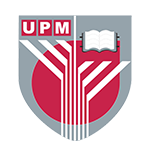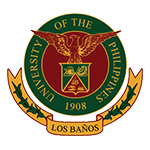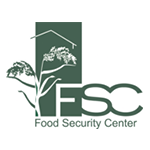 In Photo: Dr. Shotkoski at a lecture
In Photo: Dr. Shotkoski at a lecture
PRESIDENTIAL Proclamation 1414, signed in 2007, stipulates “the policy of government to promote safe and responsible use of modern biotechnology and its products as one of the several means to achieve and sustain food security, equitable access to health and services, sustainable and safe environment and industry development.”
Biotechnology, coined by Hungarian agricultural economist Karl Erchy by combining the two words, “bio [from biology]” and technology, is considered as a possible solution to the impending wave of hunger the world will be facing in the future.
Referring to that brance of science, Nobel Peace Prize laureate Norman Borlaug commented: “I [can] now say that the world has the technology—either available or well-advance in the research pipeline—to feed on a sustainable basis a population of 10 billion people. The more pertinent question today is whether farmers and ranchers will be permitted to use this new technology.”
The tools used in biotechnology include gene cloning, tissue culture, microbial culture, DNA-marker technology and genetic engineering. The latter is the most controversial as, it is the method used in developing genetically modified organisms.
To a nonscientist, biotechnology is too hard to understand. But for an American scientist like Frank A. Shotkoski, it is as easy as eating fried chicken or drinking lemon juice. Ask him anything about it, and he will not deviate from the subject.
The tools used in biotechnology include gene cloning, tissue culture, microbial culture, DNA-marker technology and genetic engineering. The latter is the most controversial as, it is the method used in developing genetically modified organisms.
To a nonscientist, biotechnology is too hard to understand. But for an American scientist like Frank A. Shotkoski, it is as easy as eating fried chicken or drinking lemon juice. Ask him anything about it, and he will not deviate from the subject.
Currently, he maintains an adjunct professor position at Cornell University in the College of Life Science Department of Plant Breeding and Genetics. He originally joined the university in 2005 as Director of Agricultural Biotechnology Support Project II (ABSPII), where he directed several biotechnology commercialization projects in South Asia, Southeast Asia and Africa. The program ended in November 2016, but he is still working pro bono on the projects in Indonesia and Bangladesh.
Biotech as boon
“I see biotechnology as an important component of the many technologies and choices that we have available to provide food security, human nutrition and health for an ever-expanding population,” Shotkoski said in an exclusive interview. “This is especially important for agriculture, where farmers are faced with many biotic and abiotic constraints, most of which can’t be dealt with using conventional technologies.”
The man knows what he is talking about. He has worked in both agricultural and medical technology and biotechnology all of his professional career. He has witnessed and experienced the benefits of biotechnology firsthand and understood well the potential future benefits to mankind that will come from this technology.
What makes Shotkoski a credible source of information when it comes to biotechnology is that he has been directly involved in the development and commercialization of two important products of genetic engineering.
It was in Bogor, Indonesia, where we had the pleasure of meeting Shotkoski. He was one of the invited speakers for the biotechnology workshop for Asian journalists. It was there we learned he had been to the Philippines several times already. In fact, he is happily married to a Filipina, Anna Marie Jensen (more popularly known as Francine Prieto).
It was in 2005 that he first came to the Philippines. As the newly appointed director of ABSPII, he visited the University of the Philippines at Los Baños (UPLB). “I spent most of my time in Los Baños working with our research team on the bacillus thuringiensis talong, ringspot virus-resistant papaya and multivirus-resistant tomato projects. I was very impressed with the professionalism of the staff and students regarding their work and dedication to the project. [And also] by their willingness to enjoy an active social life,” he recalled.
Loving the Philippines
Shotkoski finds Filipinos as his kind of people: They work hard, he said, “And they play hard!”
Aside from the people, what made him attracted to the Philippines is the natural beauty of the country. “The fantastic beaches, ocean adventures, cultural uniqueness, affordability and interesting food,” he said.
Now, going back to biotechnology. According to him, he became interested in science and technology at a quite young age. “I still remember as far back as kindergarten, our teacher showed the class a drawing of a crop duster plane spraying a crop field with insecticide,” he recalled. “The next page had a drawing of an ominous-looking grasshopper [which was] even larger than the plane from the previous drawing. The teacher went on to explain to us that because of the indiscriminate use of pesticides, we were creating superbugs that could survive the pesticide applications.”
“In my mind, I envisioned those large mutant grasshoppers knocking the crop duster planes out of the air and killing the pilots. I decided then that something had to be done about the bad situation, and it stuck with me until now. Of course, I later learned more about pesticide toxicology and the development of resistance,” he related.
The young Shotkoski grew up on a working farm in Nebraska, where people grew corn, alfalfa, sorghum and other row crops. “I was well aware of the production constraints associated with insect pests, diseases and weeds, as well as the extreme labor and intensive work involved in controlling and managing these problems,” he said. “I was convinced that there had to be an easier way to make a living on the farm.”









